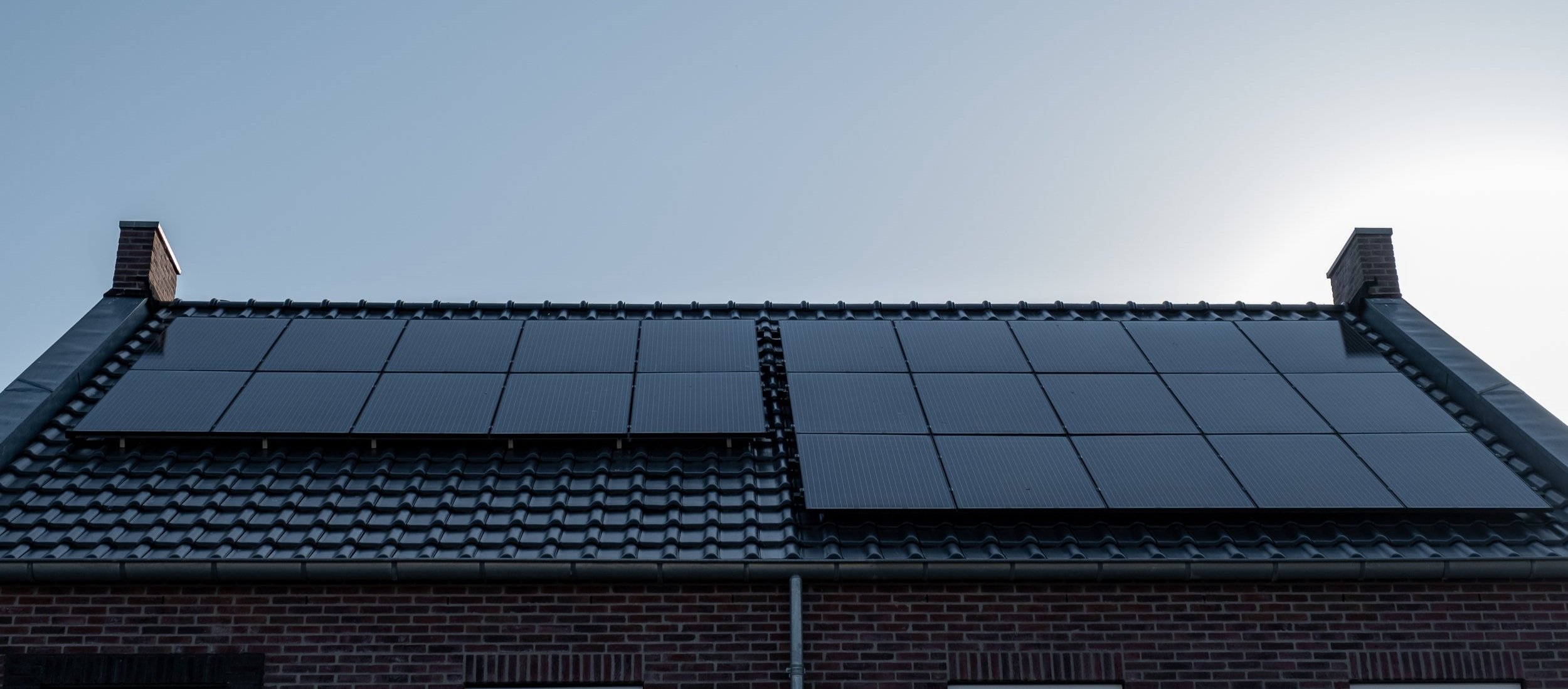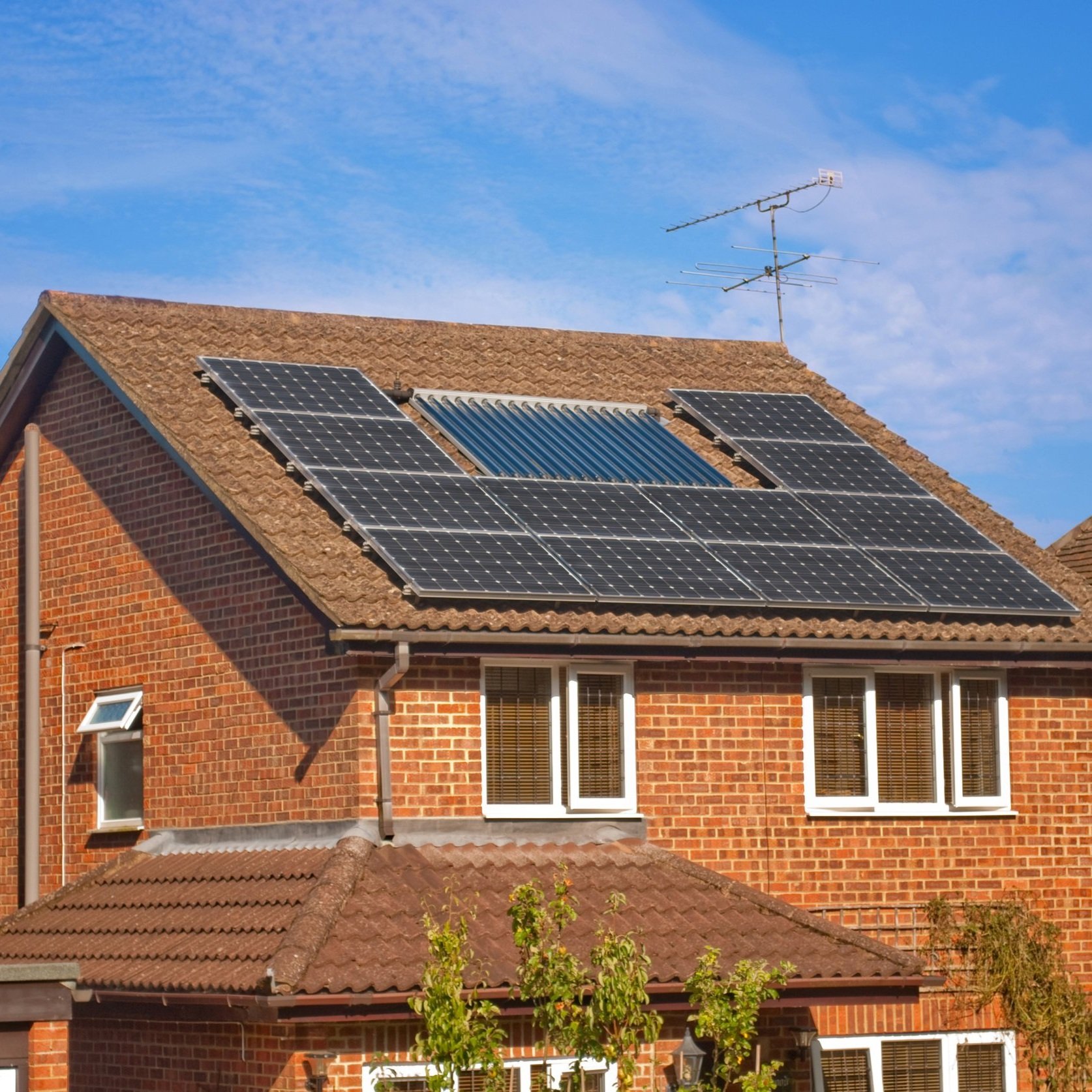
On-site Renewables & Storage
The Feed-In Tariffs (FIT) scheme has ended but Solar Photovoltaic panels are still the most popular renewable energy for homes.
Solar Photovoltaic panels
Photovoltaic (PV) panels are the most common renewable energy generation used on smaller buildings. PV panels generate DC electricity that is then usually passed through an inverter that converts this to AC for use in the home or export to the grid. It then passes through a generation meter.
In some cases there is an export meter that tells you how much energy you haven’t used, but in most cases the amount used on site is deemed to be 50%.
Getting PV to pay for itself, now that the Feed-In Tariffs (FIT) scheme has ended, requires more effort to replace electricity you have to buy.
Installing time switches on appliances and simply altering daily timetables to turn things on when the sun is out are very useful.

Energy generation with solar photovoltaic panels is currently the most common way for homes to upgrade with on-site renewables.
Battery storage
Battery storage is not renewable energy in itself but they can be used to store off peak cheap electricity from the grid for use at peak times.
Prices have started to fall dramatically meaning that a battery and/or PV package as part of of a retrofit is looking more feasible to help on the journey to zero carbon .
Battery storage is likely to be biggest game-changer in the way electricity is used, stored and distributed that we have seen for decades.
Wind
One of the cheapest sources of harvestable renewable energy when done at scale, it is less easy on a single building scale.
Firstly the wind has lost much of its energy near ground level compared to what you get on a tower. Then they're usually much smaller – it is the total area presented by the spinning blades, not their diameter, that governs their power generation potential. So a 2m diameter turbine generates 1% of the power of a 20m diameter turbine.
The other issue affecting performance of small turbines is that they are much more susceptible to eddies and air currents round buildings.
There has been much excitement about vertical axis wind turbines that might be less susceptible to frequent changes in direction, but these are not as efficient at harvesting the energy of the wind as it passes. There is even a ridge 'turbine' – a bit like a lawnmower's blade along the ridge of the roof making use of the roof slope concentration the airflow, but installations of these is not common.
Further issues that then need to be considered are noise and visual disturbance.
All that said, wind is a great complement to sun, especially in the north west, so it may be worth considering if you have the right spot – on top of a pole rather than the roof and away from building and trees that will disturb the airflow.
Other possible options
Hydro
Hydro is less common as an option for most homes, but given the right circumstances can contribute to the low carbon journey. If you have a stream at the bottom of your garden with a flow of even a few gallons a minute and a head of at least 2ft then you will be able to generate some power. It will be small compared to the larger hydro schemes and is referred to as pico-hydro.
The power available is dependent on the flow rate and the head (the height the water drops). Turbines are designed differently depending on whether it is a high head with a low flow rate or vice-versa – 1ltr per second but dropping 200m and 100ltr/s dropping 2m will both generate 1kW.
Anaerobic digestion
This is another power source best done at larger scale. Small scale versions are not common, but they definitely strengthen the argument for keeping food out the the landfill stream and directing it to this kind of process first.
Combined heat and power (CHP)
Rather than being renewable, CHP is about making better use of the fuels being burnt. Where a generator will simply get rid of heat produced as part of the generation process as waste, a CHP unit will use that heat to provide space and hot water heating. Domestic scale versions of these are now available, using various technologies like the Stirling Engine or fuel cell technology generating between 5 and 8kW of heat to between 750 W and 1kW of electricity. However, they are expensive and their high tech nature means there have been issues with maintenance and reliability. There is an argument that the amount of money they cost might be better spent on demand reduction.



